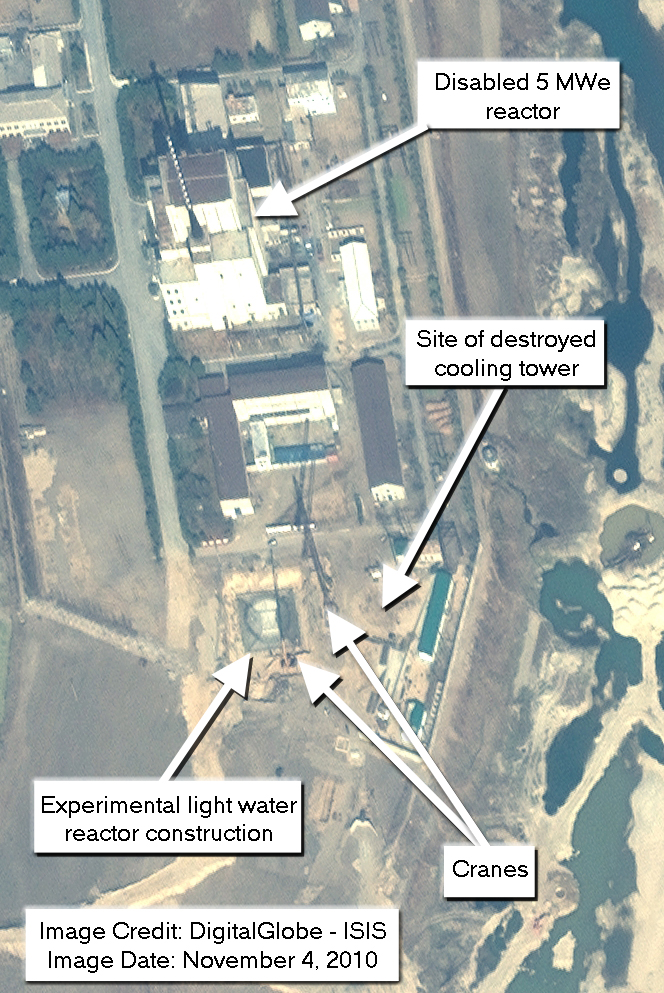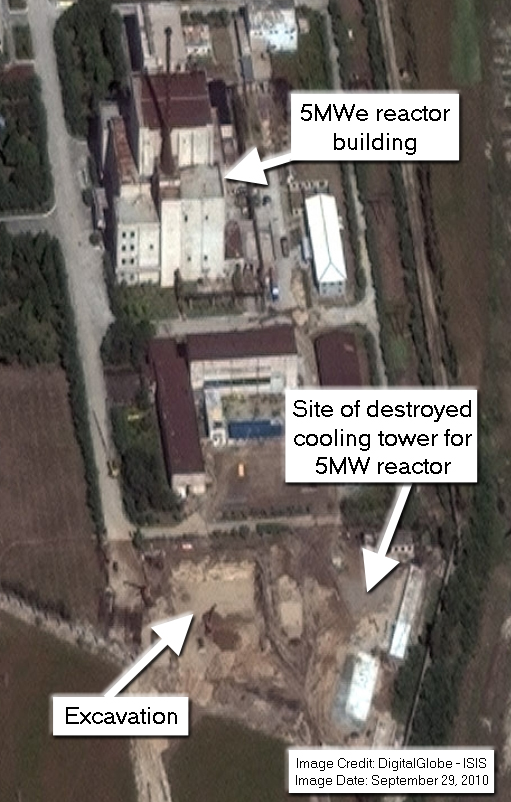 Source: DTN News - - This article compiled by Roger Smith from reliable sources AP & ISIS - Institute for Science and International Security
Source: DTN News - - This article compiled by Roger Smith from reliable sources AP & ISIS - Institute for Science and International Security
North Korea vowed in March to build such a reactor using its own nuclear fuel, and two American experts who recently visited the North have reportedly said that construction has begun.
Light-water reactors are ostensibly for civilian energy purposes, but such a power plant would give the North a reason to enrich uranium. At low levels, uranium can be used in power reactors, but at higher levels it can be used in nuclear bombs.
North Korea is pursuing an arsenal of atomic weapons, so all its nuclear projects are of intense interest to its neighbors and to the United States. It carried out nuclear tests in 2006 and 2009, drawing international condemnation and U.N. sanctions.
The Washington-based Institute for Science and International Security on Thursday released commercial satellite images from Nov. 4 that show a rectangular structure being built, with at least two cranes visible at the complex. It estimated North Korea was constructing a 25 to 30 megawatt light-water reactor.
The institute based its estimate on information from the recent trip to Yongbyon by Siegfried Hecker, former director of the U.S. Los Alamos Nuclear Laboratory, and Jack Pritchard, a former U.S. envoy for negotiations with North Korea.
It said Hecker told the institute "that the new construction seen in the satellite imagery is indeed the construction of the experimental light-water reactor."
The institute said the amount of low-enriched uranium needed for a 25 to 30 megawatt reactor could vary "depending on the design of the reactor and whether it will be optimized for electricity production or weapon-grade plutonium production."
South Korean Foreign Ministry spokesman Kim Young-sun said the construction has yet to be verified and that Seoul was monitoring developments at the site and talking with other countries. Kim said any move to build a light-water reactor would violate U.N. resolutions on North Korea.
The new satellite imagery comes as North Korea presses for the resumption of international nuclear disarmament talks it quit last year. South Korea and the United States have said North Korea must show its sincerity before those talks can continue.
Washington promised the energy-starved North two light-water reactors under a 1994 deal meant to freeze North Korea's plutonium program. The deal, however, collapsed in 2002 when the United States accused North Korea of running a secret uranium enrichment program.
After seven years of adamant denials, North Korea said last year that it was in the final stages of uranium enrichment — a process that would give it a second way to build nuclear bombs in addition to the plutonium program.
The Choson Sinbo, a pro-North Korean newspaper in Japan, reported Thursday that Pyongyang was building a light-water reactor as part of its plan to revive its economy ahead of 2012, the 100th anniversary of the birth of the country's founder, Kim Il Sung, father of current leader Kim Jong Il.
The November 4, 2010 imagery shows a rectangular structure being built. At least two cranes are visible in the imagery (see figure 1). In constructing the experimental light water reactor at the site of the destroyed cooling tower, North Korea may intend to utilize existing infrastructure for the new reactor. For example, it could use water piping for the secondary cooling system of the 5 MWe reactor that remained after the disablement process of this reactor.
ISIS estimates that a 25-30 MWe light water reactor would require several tones of low enriched uranium (LEU) in the core and on order of one tonne of LEU per year as reloads. These values could vary depending on the design of the reactor and whether it will be optimized for electricity production or weapon-grade plutonium production for weapons.
ISIS also estimates that North Korea would need a pilot scale uranium enrichment plant with on order of 1,000 centrifuges in order to produce this amount of LEU per year. On October 8, 2010, ISIS released a report assessing uranium enrichment in North Korea. The report found that “the data support that North Korea has the capability of building, at the very least, a pilot plant.”
Dr. Hecker plans to release a report next week on the findings from his trip.

Figure 1. November 4, 2010 DigitalGlobe satellite image of the Yongbyon nuclear site showing continuing construction at the site the destroyed cooling tower for the original 5 MWe reactor. Dr. Siegfried Hecker informed ISIS that this is the same site where construction of a new experimental light water reactor is taking place.

Figure 2. September 29, 2010 DigitalGlobe satellite image of the Yongbyon nuclear site showing excavation activity in the area of the destroyed cooling tower.
1 The cooling tower for the disabled 5 MWe reactor was demolished in 2008 during the implementation of disablement measures.
 DTN NEWS ON TWITTER (25 SUBJECTS)
DTN NEWS ON TWITTER (25 SUBJECTS)





No comments:
Post a Comment